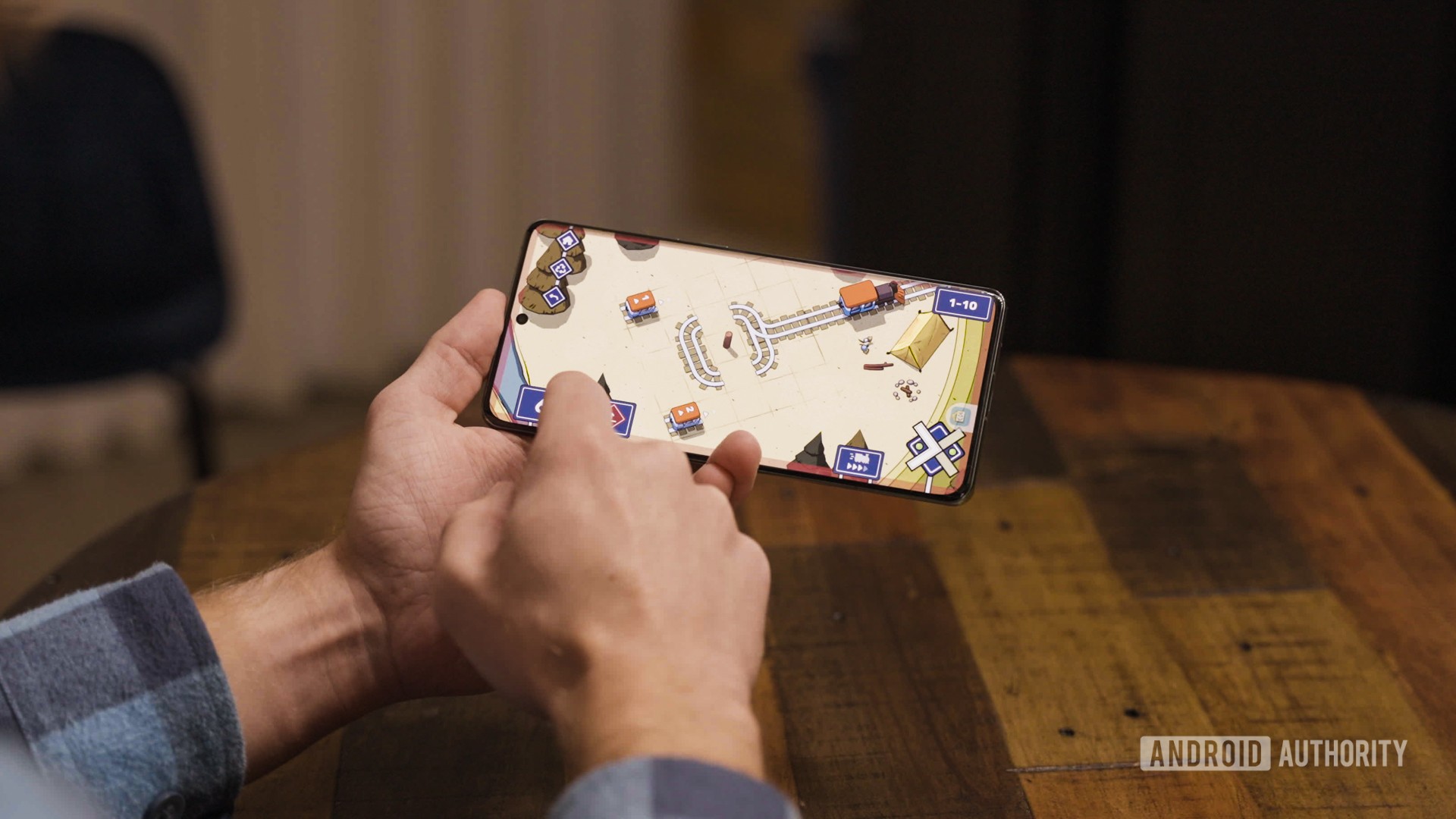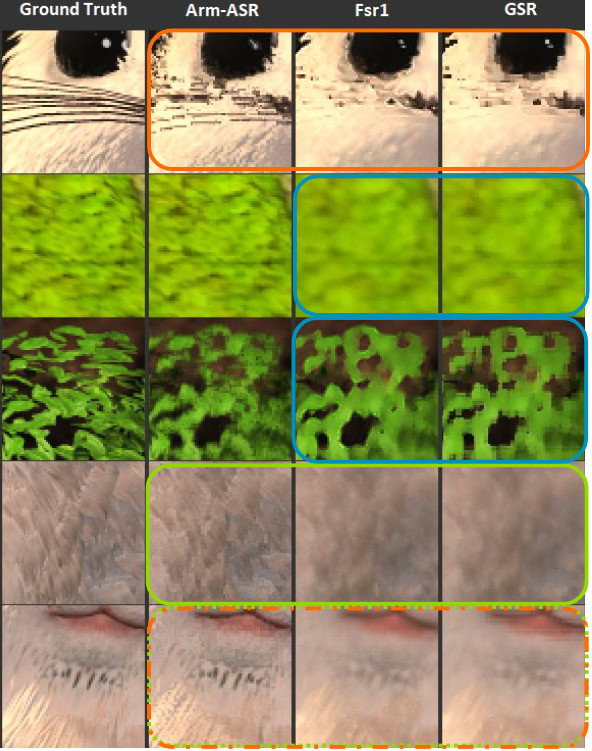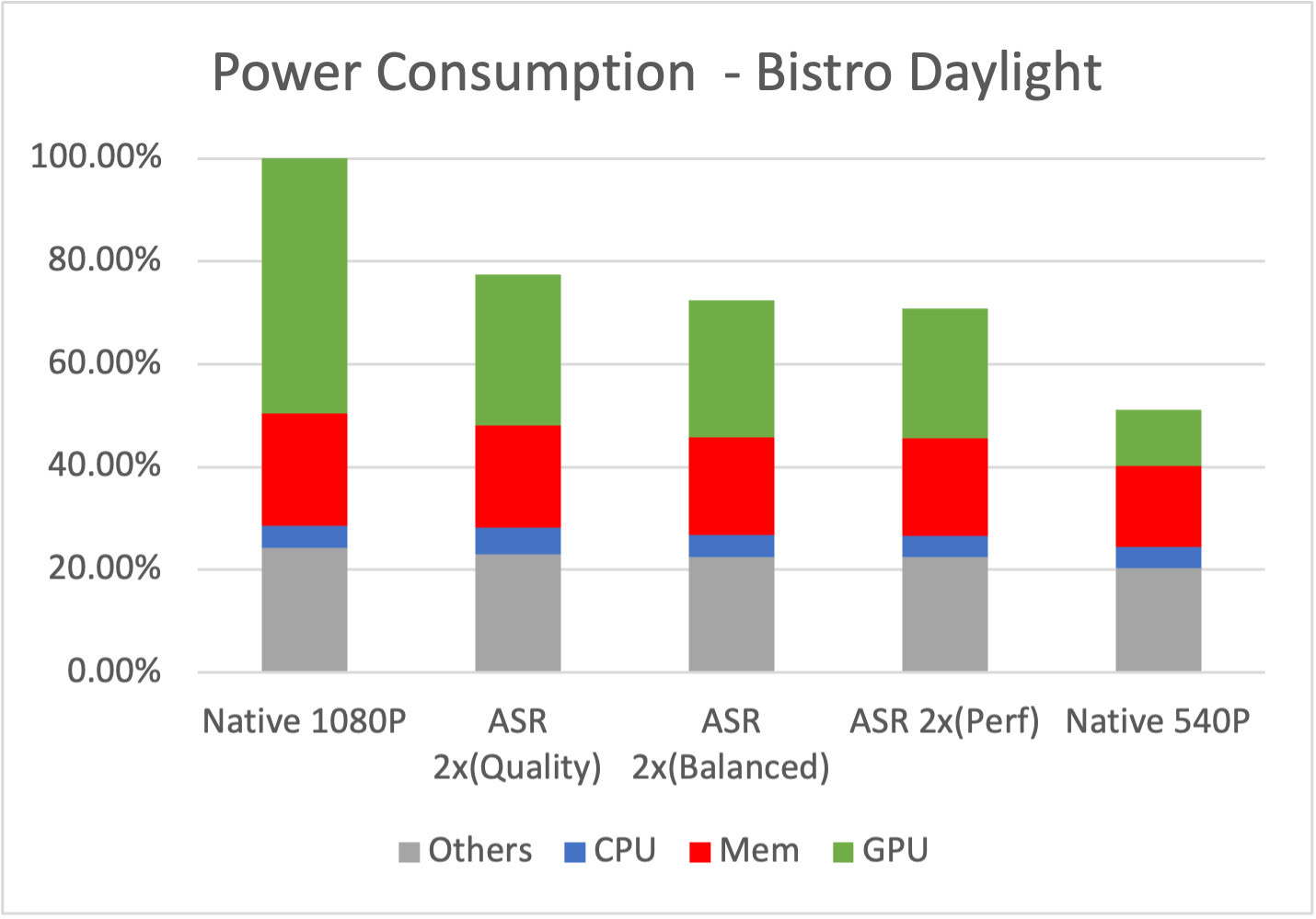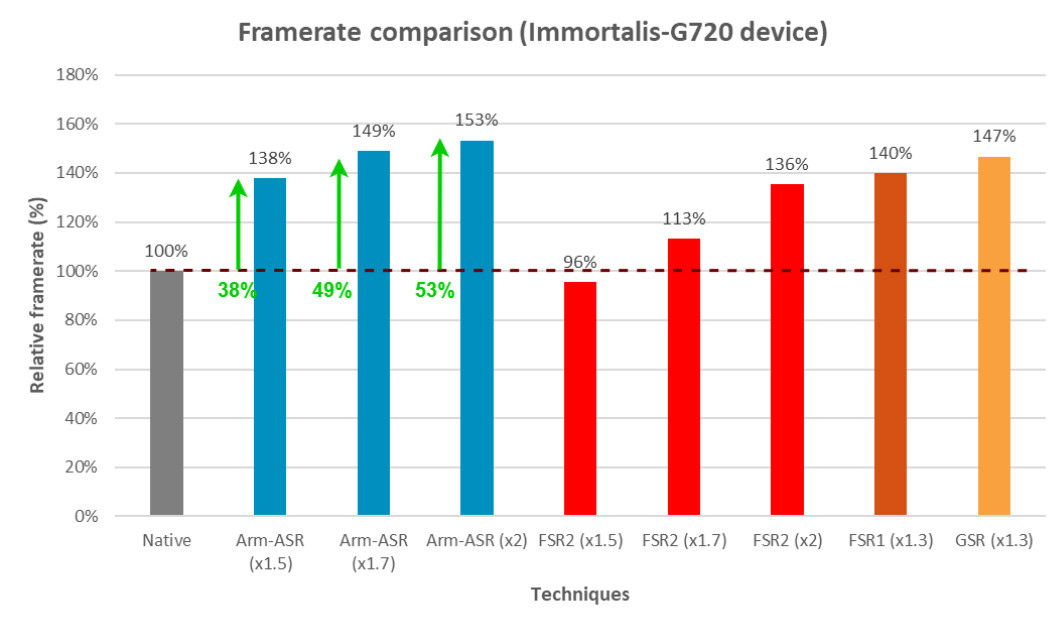Affiliate links on Android Authority may earn us a commission. Learn more.
Arm's new game upscaling tech could be just what Pixels need (Update)
July 14, 2024

- Arm has announced Arm Accuracy Super Resolution (ASR), a new game upscaling solution for mobile devices.
- The company claims improved performance and reduced power consumption compared to running games at a native, high resolution.
- This would be a great feature on Google Pixel phones, which have historically suffered from heating and comparatively poor performance.
Update: July 15, 2025 (10:40 AM ET): Arm told Android Authority that its new upscaling technology supports older devices too. Check out our article for a full rundown and for more on supported games/engines.
Original article: July 12, 2024 (10:37 AM ET): Super-resolution technology has become one of the most important features in PC and console gaming today. This tech upscales the resolution in video games, allowing for sharper, more detailed graphics while still offering great performance. Now, a huge mobile player has announced its own take on the tech.
Arm announced Arm Accuracy Super Resolution (Arm ASR) this week, and it’s an open-source resolution upscaling technology for mobile devices. The company says ASR is derived from AMD’s open-source FSR2 upscaling tech used on PCs, the Steam Deck, and game consoles.
Why would you want this on your phone?
As graphical fidelity increases, many PCs and consoles can struggle to run games at a high display resolution. This can result in slowdown and juddery performance. Switching to a low resolution can decrease the load on your PC, though, translating into a smoother experience. This reduced load also makes for lower power consumption. The downside is that a low display resolution often means blurry, lower-quality graphics.
What if you could have the performance and efficiency benefits of running at a low resolution but the sharper visuals associated with a high display resolution? That’s what resolution upscaling brings to the table, and it’s become a key feature in games today. This function takes a relatively low display resolution in a game (e.g. 480p, 540p, 720p) and boosts it to a high resolution (e.g. 1080p or even 4K). That means you can enjoy sharper visuals without the performance and power consumption penalty associated with natively running a game at that resolution.
Resolution upscaling is increasingly common on handheld devices like the Steam Deck and Nintendo Switch, delivering smoother performance, reduced power consumption, and reduced temperatures. So it makes sense to offer this tech on smartphones, which are similarly constrained in terms of thermals and battery life.
How does Arm ASR work?
Arm notes that upscaling is either spatial or temporal. The former operates on a frame-by-frame basis and is typically less demanding, with Arm claiming that Qualcomm’s Game Super Resolution feature takes this approach.
“The drawback of this technique is that developers cannot be too ambitious in choosing the resolution to render at because this will lead to blurred final images. Conversely, they are relatively cheap from a computational standpoint,” the company explained.
Arm ASR promises sharper graphics without the associated performance and battery hit.
Meanwhile, temporal upscaling is more complex and uses multiple frames to generate an upscaled image, but Arm says this can deliver higher-quality results. ASR and FSR2 take this approach to upscaling in games. So what kind of results can you expect? The company compared ASR to AMD’s older FSR1 solution and Qualcomm’s GSR tech. Check out the comparison below.
That’s encouraging, but this is just one benchmark crafted by the Arm team anyway. So we’ll need to wait for more content before making a definitive verdict.
Arm also said it analyzed results from a commercial mobile device with a MediaTek Dimensity 9300 chipset, an Arm Immortalis-G720 GPU, and a 2,800 x 1,260 display (suggesting the vivo X100 Pro). Here’s what to expect in terms of power savings.
Arm’s graph shows that while a native low resolution (540p) is still 50% more efficient than a native 1080p resolution, ASR still apparently consumes much less power than running at 1080p natively.
The company also claimed a frame-rate boost of up to 53% when using ASR compared to a native display resolution. However, Qualcomm’s GSR offers a similarly big performance leap (ignore Arm’s wonky bars).
Super-resolution/upscaling is already here on mobile
This isn’t the first time we’ve seen resolution upscaling on smartphones. Manufacturers like OnePlus, Xiaomi, and others have long used discrete chips from companies like PixelWorks to offer frame interpolation and upscaling in mobile games. However, a native solution like ASR or Qualcomm’s GSR could potentially deliver wider compatibility, improved performance, and greater efficiency.
Qualcomm also announced its GSR solution last year, positioning it for mobile devices and XR gadgets. Best of all, titles like Call of Duty Warzone Mobile and Farming Simulator 2023 Mobile already use this tech. So Snapdragon-powered phones can already benefit from upscaling.
Nevertheless, Arm’s implementation suggests that phones powered by Arm GPUs will enjoy higher-quality visuals, better performance, and improved battery life when playing supported games. The Tensor chipsets seen in Google Pixel phones indeed use Arm GPUs, suggesting that Pixel phones could benefit from this tech. That would be a welcome addition to Google devices, as these phones tend to have less horsepower than rival devices and have a historical reputation for heating up very quickly. So a Pixel 9 or Pixel 10 running games with ASR enabled could make for a smoother, cooler, and longer-lasting experience.
We’ve asked Arm about the hardware requirements for ASR (e.g. GPU, SoC). We’ve also asked the company if it’s working with any specific game/engine developers for this technology. The firm has acknowledged receipt of the questions and we’ll update the article if/when it gets back to us.
Thank you for being part of our community. Read our Comment Policy before posting.


